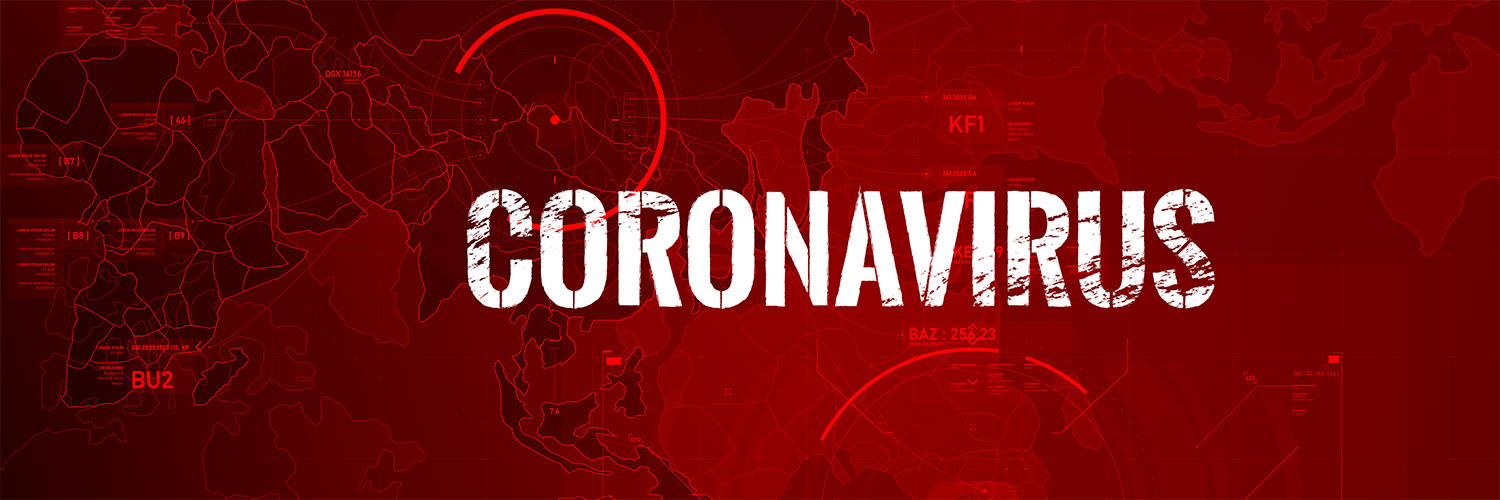Is Your Global Supply Chain Prepared for the Coronavirus?

There’s a panic beneath the surface of global supply chains, and history has shown that it’s going to get much worse before things get better, and that’s especially true for the logistics industry.
The Coronavirus Outbreak
The Coronavirus outbreak, which began in Wuhan, China, has infected nearly 75,000 people, most in the central Hubei province.
Unfortunately, government controls in China and changes in how healthcare workers are classifying infectious cases mean there could be significantly more.
It’s too late to make preparations for the Coronavirus now, but you can - and should - plan now for future supply chain disruptions.
The illness is spreading quickly. It’s already disrupting supply chains and manufacturing efforts around the globe.
Foxconn Technology Group, the famous Apple supplier and one of the world’s largest electronics contract manufacturers, says the epidemic will hit the company’s bottom line across most sectors and industries.
Workers are staying homesick or to avoid becoming sick, plants are closing more extended periods, ships are not shipping, and work is going undone.
While we’re focused heavily on the human cost of the illness, we should also look at how it is impacting the broader economic ecosystem and the potential for long-lasting business impacts.
Your company should start working now to mitigate some risks and protect your supply chain, but it’s worth remembering that the Coronavirus outbreak has struck at a time when the world’s economy is interconnected. Globalized.
The time for a pen-and-paper response is long over, especially considering what’s new about this outbreak.
What’s Different About the Coronavirus Outbreak?
From a public health standpoint, the SARS outbreak has many similarities to the current Coronavirus outbreak. The economic impact can be likened to Thailand’s flooding in 2011 - mainly impacting the tech sector - or the Fukushima nuclear disaster.
Those are good to review, but the scale of the novel Coronavirus is significantly larger. Instead of hurting the supply of particular industries and smaller market segments, the current outbreak is impacting supply across nearly all industries with a presence in China, impacting goods that move through the region - Wuhan plays a significant role in the use of the Yangtze River - and a high volume of parts and raw materials that Chinese companies produce.
At the same time, the large scale economic impact of Chinese factories and manufacturers shutting down is dampening spending in the country. We see significant disruption to supply and demand, meaning the effect is felt sooner in the supply chain and could do more extensive and prolonged damage.
Who is at Risk of Supply Chain Disruptions?
Small companies and small supply chains are at the most risk right now. The higher upstream they are in the supply chain, the more vulnerable they are. That’s due to the one-two punch to supply and demand sides of the economic equation.
What we will likely, and unfortunately, see is that retailers will see a mix of demand decline for some goods - causing increased storage and inventory costs - while other products maintain demand but have reduced supply.
Both tend to impact future sales negatively.
At the same time, manufacturers and wholesalers whose operations are impacted will see customers reduce orders and potentially look for replacement partners.
The longer the outbreak goes on, the more these issues compound and reverberate through larger supply chains. Bloated inventories, reduced demand and sales, and increased costs for all parties could potentially hit small companies harshly and quickly enough that they are at risk of folding before governments step in to help.
According to one report, the biggest industries at risk for large-scale disruption include:
- Tools and hardware
- Electronics and appliances
- Auto parts OEMs
- Building products
- Diversified chemical
- Telecom
- Large industrial enterprises
Every Supply Chain is Different
An essential part of the response to the novel Coronavirus is a review of your supply chain. See how it will impact you and how it impacts your partners, vendors, and carriers. If someone manufactures goods for you, for example, their immediate stock may not be impacted, but orders three to six months out can be significantly delayed if products or raw materials are moving through China.
Map out all the connections you know and reach out to partners to see about their impact right away. You’ll want to get a better understanding of their risk so that you can adjust to new routes or prepare for additional costs.
Let’s look at Flexport, a San Francisco-based freight forwarding and customs brokerage company. According to Panjiva and MarketWatch, Flexport faces more exposure in China than many of its rivals. China accounted for at least 45% of Flexport’s U.S. seaborne inbound handling in 2019. The longer the Coronavirus impacts China’s economy, the more likely the company’s customers may face additional costs or concerns.
The reaction to the outbreak makes it very difficult to forecast air cargo rate change, according to statements by Flexport representatives, and the ocean freight impact is large enough that it could cause issues and increases.
“Unlike air freight, ocean freight is usually pretty independent of passenger traffic and accounts for the bulk of supply chain shipments. But the Yangtze is a very important internal waterway running through Wuhan. When traffic is disrupted, the effect can be significant,” wrote the company’s Chief Economist Phil Levy.
While the impact may be more significant if your supply chain heavily relies on Flexport, the Coronavirus is large enough that everyone will see some effects. It’s time to review what you have and where it’s positioned.
Using Lean Logistics Tools to Respond in a Dynamic Market
The impact of the Coronavirus is something every logistics and supply chain professional must take seriously. Even if your company isn’t directly hit, there’s a chance that your partners may face hardships if their other customers are impacted.
While you study how your supply chain is affected, this is an opportunity to look at the big picture in terms of lean, agile business management. It’s a growing field that tries to address all the complex moving parts of a supply chain, and software is a big part of that management and understanding.
ShipStream is one piece of a proactive methodology you can use to protect your business. We help you manage warehouses and inventories, look for carrier options and opportunities, and can make it easier to source your goods and products. At the same time, we automate a lot of the manual tasks in older warehouses, so you’re not stuck with 1,000 products instead of 10, eating up space and revenue.
We’re all about giving you the control that you’re looking for, which can translate to better upstream risk management. Knowing your inventory and where it’s positioned can help you manage both short-term and long-term risks. The knowledge we help you build around customers and markets may also highlight areas where you can pivot when a specific product’s supply chain is disrupted.
There’s no silver bullet to preventing supply chain impact when something as large as this Coronavirus outbreak occurs. However, you can start preparing by gaining a better understanding of your supply chain, knowing where you have flexibility in products and inventory space, and adopting technology designed to deliver better business insights.
Source: ShipStream via FUNYL.com
About the Author
Evans Kariuki is Founder at Circle K Supply Chain Solutions Group, a Supply Chain Consulting, Lean Training & Education, and 3PL Solutions Company
Related Article: MIT Center for Transportation & Logistics Response to the Coronavirus Crisis
Related White Paper
Supply Chain Lessons Learned from The Coronavirus and SARS Outbreaks
This white paper contains insights from recent interviews with leading organizations on how they are responding to the new coronavirus crisis. Download Now!
More Resources the Coronavirus Crisis
Article Topics
ShipStream News & Resources
Is Your Global Supply Chain Prepared for the Coronavirus?Latest in Supply Chain
A Look at Baltimore’s Key Bridge Collapse—One Month Later European Parliament Passes New Law Requiring Supply Chain Accountability Baltimore Continues Bridge Recovery With Opening of New Channel How Shippers Can Prep for Hurricane Season Apple Accused of Multiple Human Rights Violations South Korea Finally Overtakes China in Goods Exported to U.S. UPS Struggles in First Quarter With Steep Earnings Decline More Supply Chain














